MB has repeatedly shown that record net overseas migration (NOM) is behind Australia’s rental crisis.
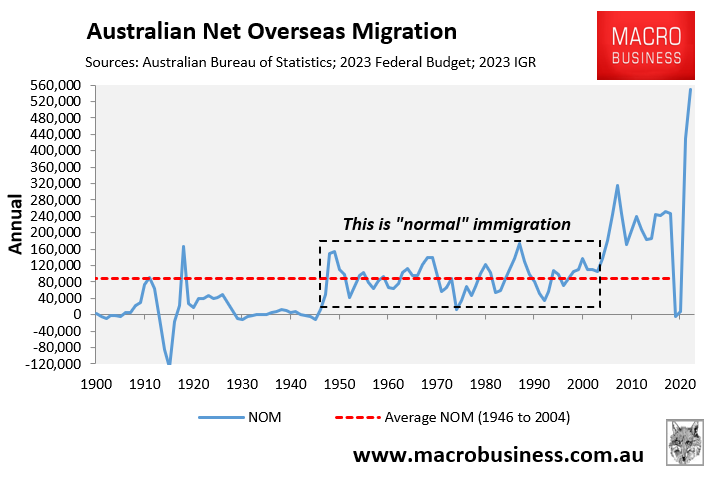
The data is clear. Rents fell at the start of the pandemic when NOM fell, only to rise when migration surged to record levels:

The correlation between population increase and rental growth is clear as day:

The rapid rise in migrant numbers in a supply-constrained market has pushed rental vacancy rates to near record lows, as it did when NOM spiked in 2008-09:
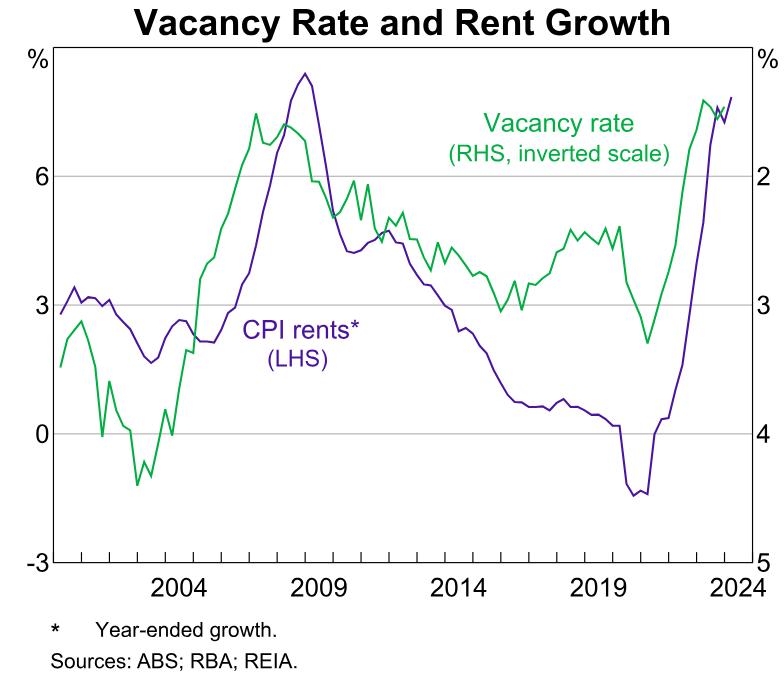
As a result, rental inflation soared has soared:
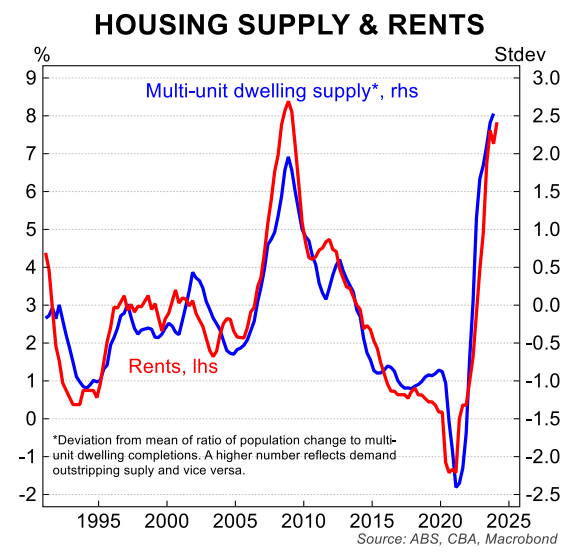
Exactly the same phenomenon is happening in other markets that are experiencing record NOM.
For example, Canada received more than 1.2 million net overseas migrants in 2023 (a record), which has caused an unprecedented housing shortage:

In turn, rental vacancy rates have been driven to record lows:

While rents have been pushed to all-time highs across Canada, commensurate with the explosion in the population:
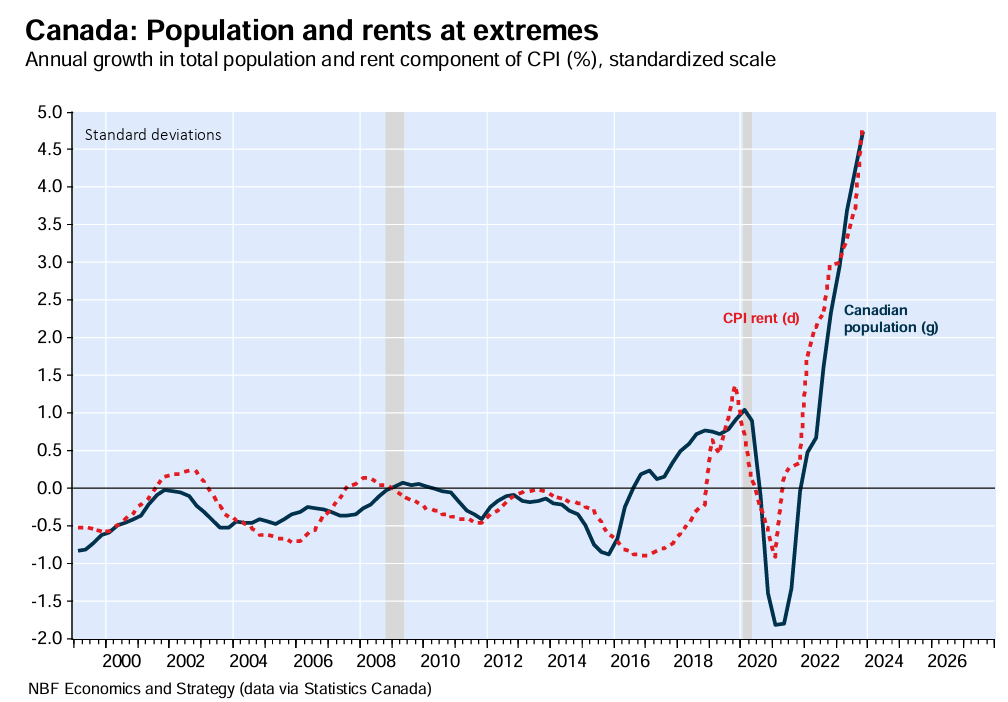
In a similar vein, the UK is experiencing record immigration, which has caused a deepening rental crisis:
Record levels of immigration have driven a third of the rent growth in the UK since Covid, new analysis shows…
In the two years to June 2023, immigration led to an additional 430,000 households wanting to privately rent homes, meaning rents have climbed 11pc higher than they would otherwise have been, according to Capital Economics…
Since 2021 rent growth has far outpaced salary increases. Now, Britain is grappling with a rental crisis as homes become increasingly unaffordable.
Between mid-2021 and the start of 2024, UK rents rose by 30pc, according to property website Zoopla. This was nearly double the 17pc increase in wages over the same period.
The figures are in stark contrast to the decade up to mid-2021, when rents climbed by 26pc over the 10-year period, slightly less than the 27pc increase in wages…
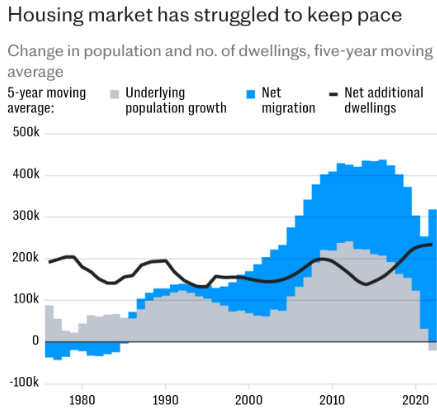
Andrew Wishart, who runs the housing service at Capital Economics, said: “This means rents are 11pc higher than would be explained by the usual relationship between pay and rent. The vast majority of that is because of higher net migration.”
This means that around a third of the 30pc increase in rents can be attributed to immigration, Mr Wishart said.
Net immigration hit an unprecedented 467,000 in 2021, before rising even further to 745,000 in 2022, official data shows.
The number fell slightly to 672,000 in the 12 months to June 2023, but this was still nearly four times the 184,000 figure before the pandemic in 2019.
These figures suggest that, in the two years from mid-2021 to June 2023, based on the average household size, net immigration led to an additional 430,000 households looking for homes in the private rented sector, Mr Wishart said.
This was roughly triple the average 150,000 additional renting households due to immigration over every two-year period in the preceding decade…
A report by the Centre for Policy Studies (CPS) think tank earlier this month warned that “immigration is severely exacerbating the housing crisis” because supply has not kept pace with demand…
Who would of thought? When you grow the population faster than the capacity to build homes and infrastructure, you create shortages.
Yes, the basic laws of supply and demand apply to the rental market as well.

